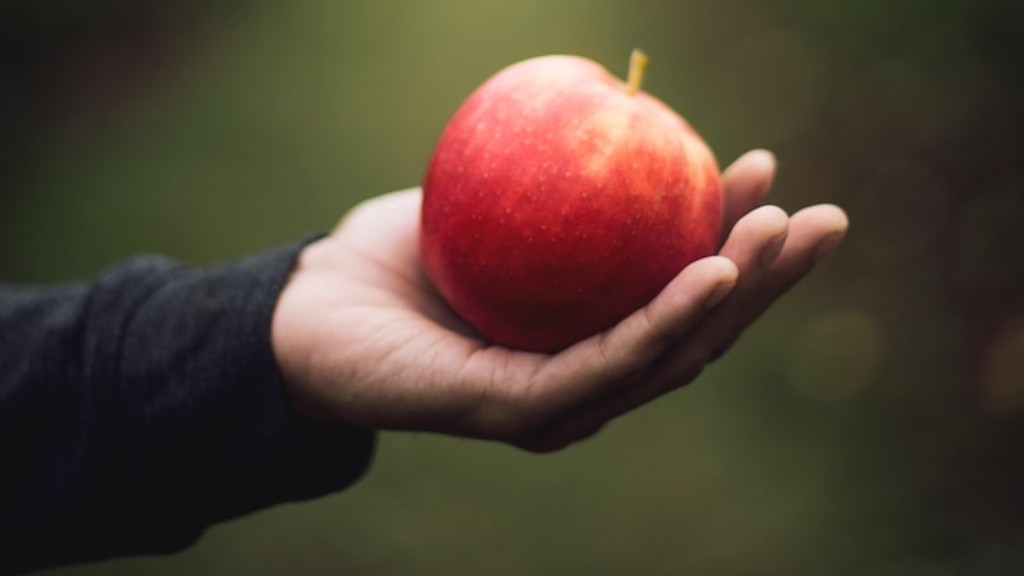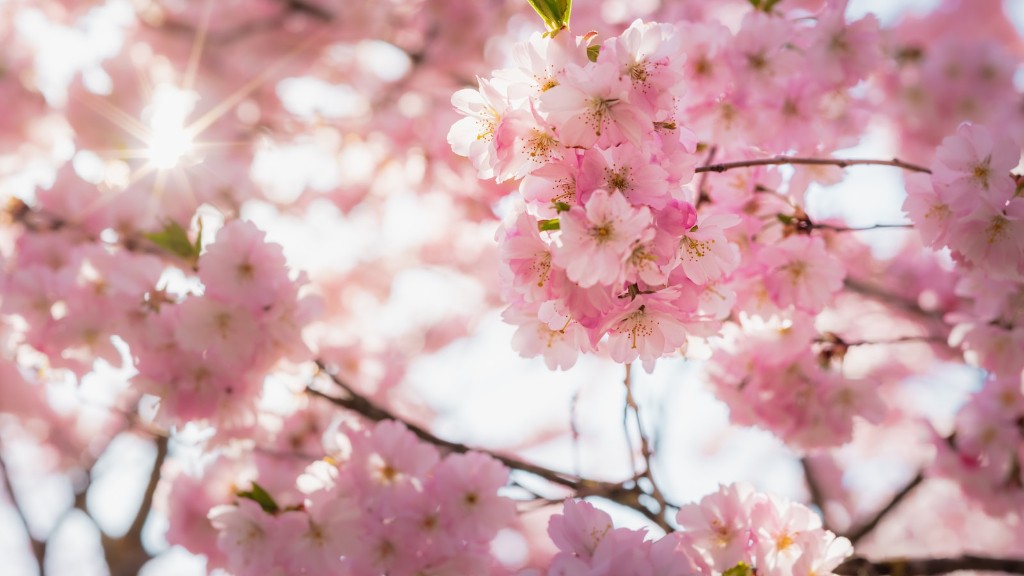Fruit-bearing apple trees are not difficult to cultivate, but getting them to yield a high-quality product does require regular care. The first key for getting your apple tree to bear fruit is to have healthy, vigorous trees. Start by choosing trees that are disease-resistant and well adapted to your region, and make sure the trees are planted in well-drained, well-worked soil. Your trees should be spaced at least 12 feet apart and mulched beneath the canopy to maintain soil temperature and moisture levels.
For your apple trees to bear fruit, they must be pollinated. This can happen either by cross-pollinating with a nearby compatible variety or by hiring bees to do the job. Honey bees are excellent pollinators, but you should also consider other pollinators, like bumble bees and mason bees. Don’t forget to select varieties that bloom at the same time for the best pollination results.
Apple tree fertilization is essential for ensuring good fruit production. Start fertilizing in late winter or early spring, when the tree buds begins to swell. You should continue fertilizing your trees every two or three weeks until the end of summer. Organic fertilizers, such as compost or manure, are particularly beneficial for apple trees as they provide a range of nutrients.
Pruning is another important step for growing optimal apples; it helps to train the trees and increase fruiting. Remove dead, diseased, or broken branches, as well as those that are crossing or rubbing against each other. Cut back most of the other branches to open up the center of the tree and promote airflow. Additionally, thin out the fruit by cutting off some of the apples to prevent overcrowding.
Once your apple tree is mature and you anticipate fruits, begin keeping an eye out for pests and diseases. Many common apple pests, like fruit flies and aphids, can be eliminated through natural means, such as beneficial insects or sprays of water. If you suspect infection from an apple tree disease, address it immediately to reduce damage and prevent it from spreading.
Finally, be sure to harvest your apples in a timely fashion. Apples taste best when picked at their peak ripeness, so you should check your tree daily to see when the apples are ready. Ripe apples should come off the tree fairly easily; if you have to tug on them to get them off, they’re not ready.
Pest and Disease Control
Organic pest and disease control is an essential part of keeping your apple tree healthy and productive. Keeping the trees well-mulched, pruned, and fertilized helps to ensure the trees have their best chance at fending off disease and pests.
Additionally, you should regularly monitor your trees for any signs of infection, such as wilting leaves, mold, discoloration, or fruiting abnormalities. If you do spot any of these signs, act quickly and apply an organic fungicide or insecticide as needed. Before applying any product, make sure you read the label carefully to ensure it’s compatible with the type of tree you’re treating.
If you live in an area where certain pests, like codling moth, are particularly troublesome, you might consider using pheromone traps or other traps to catch adults before they can lay eggs, or installing mating disruption systems, which can disrupt the mating process of certain insect pests.
Finally, consider planting companion plants near your trees that attract beneficial insects, such as ladybugs, who will feed on aphids and other pests. Planting beneficial flowers, like cosmos, lupins, and daisies, can attract predatory insects as well as other beneficial insects, like bees and butterflies, that help with pollination.
Water Irrigation and Mulching
To keep your apples healthy and prevent them from getting too dry, consider using a drip irrigation system to provide your trees with a steady supply of water. Start irrigating in early spring and continue until the end of summer. Make sure the water is reaching the entire root zone; if you notice dry patches, adjust the irrigation system and add more water.
Mulch also helps to retain water, regulate soil temperature and protect your tree’s roots during the winter. Organic mulches, like straw, leaves, grass clippings, and wood chips, can help to keep your trees healthy and are readily available in most areas. Spreading a 2- to 4-inch layer of mulch over the root zone will help to reduce water evaporation, suppress weeds, and improve soil structure.
Be sure to check the mulch periodically and top up the layer with fresh material as needed. Mulches can also help to control certain soil-dwelling pests and diseases; using them around your apple trees can help to reduce the need for chemical treatments.
Thinning for Optimal Quality Apples
When it comes to apple production, it’s important to remember that quality is more important than quantity. Too many apples on a tree can lead to a lower quality harvest and potential loss of crop. To get the best possible apples, it’s important to thin the fruit periodically, preferably in early summer.
Thinning removes some of the apples to give the remaining ones more room to grow and develop. Start by removing any small apples and apples that are too close to each other; this will help promote airflow and ensure the remaining fruit ripens evenly. When thinning, leave around 5 to 10 inches between each apple. If your tree is very heavily laden with fruit, leave around 8 to 17 inches between apples.
Finally, don’t forget to remove any damaged or diseased fruits as soon as possible. These can become breeding grounds for pests and spread disease quickly, so make sure you keep an eye out for any signs of trouble and react accordingly.
Harvesting and Storing Your Apples
When it comes to harvesting apples, timing is key. Apples ripen at different times depending on the variety, so it’s important to know when the best time is to pick. You’ll know your apples are ripe when the color has changed to their characteristic hue, when a couple of seeds start to change color, or when the flesh gives slightly when you press it.
Harvest the apples in the morning, when temperatures are cool, and handle them with care to prevent bruising. Collect your apples in open-top baskets or wooden boxes that have plenty of ventilation. Once harvested, store your apples at temperatures of 32-40° F, with high humidity. This will help to keep the apples fresh and prevent them from shriveling or softening.
Apple trees can provide a steady source of delicious fruit when they’re properly cared for and harvested at the right time. With a little patience and some knowledge of the care requirements, you can have a bountiful harvest of apples each year.
The Benefits of Growing Apple Trees
Growing an orchard of apple trees has many benefits, both for you and the surrounding environment. Apple trees are hardy perennials and require less maintenance than other fruit trees. Additionally, you can use the wood from the trees for woodworking projects or to make bonfires.
Harvesting and eating your own apples is an incredibly satisfying experience, and when you grow your own apples, you can be sure of their freshness and quality. Lastly, apple trees are highly beneficial for pollinators, like bees and butterflies, and can provide much-needed habitat and food sources for beneficial insects and animals.
Considering that apples are a staple of many diets, cultivating an orchard of your own can be a fun and rewarding task. With regular care and monitoring, you’ll soon be harvesting your own apples and enjoying their delicious flavor.




